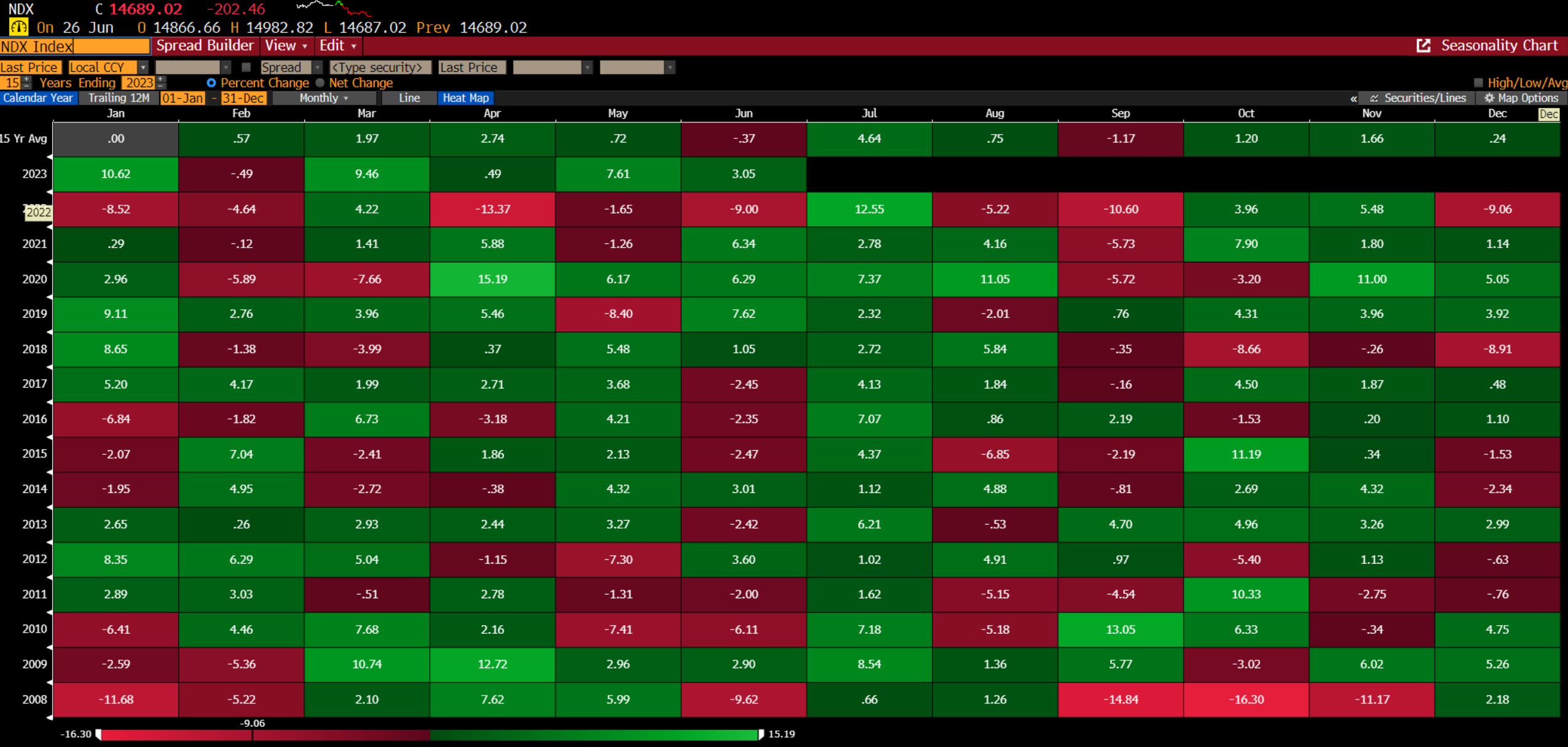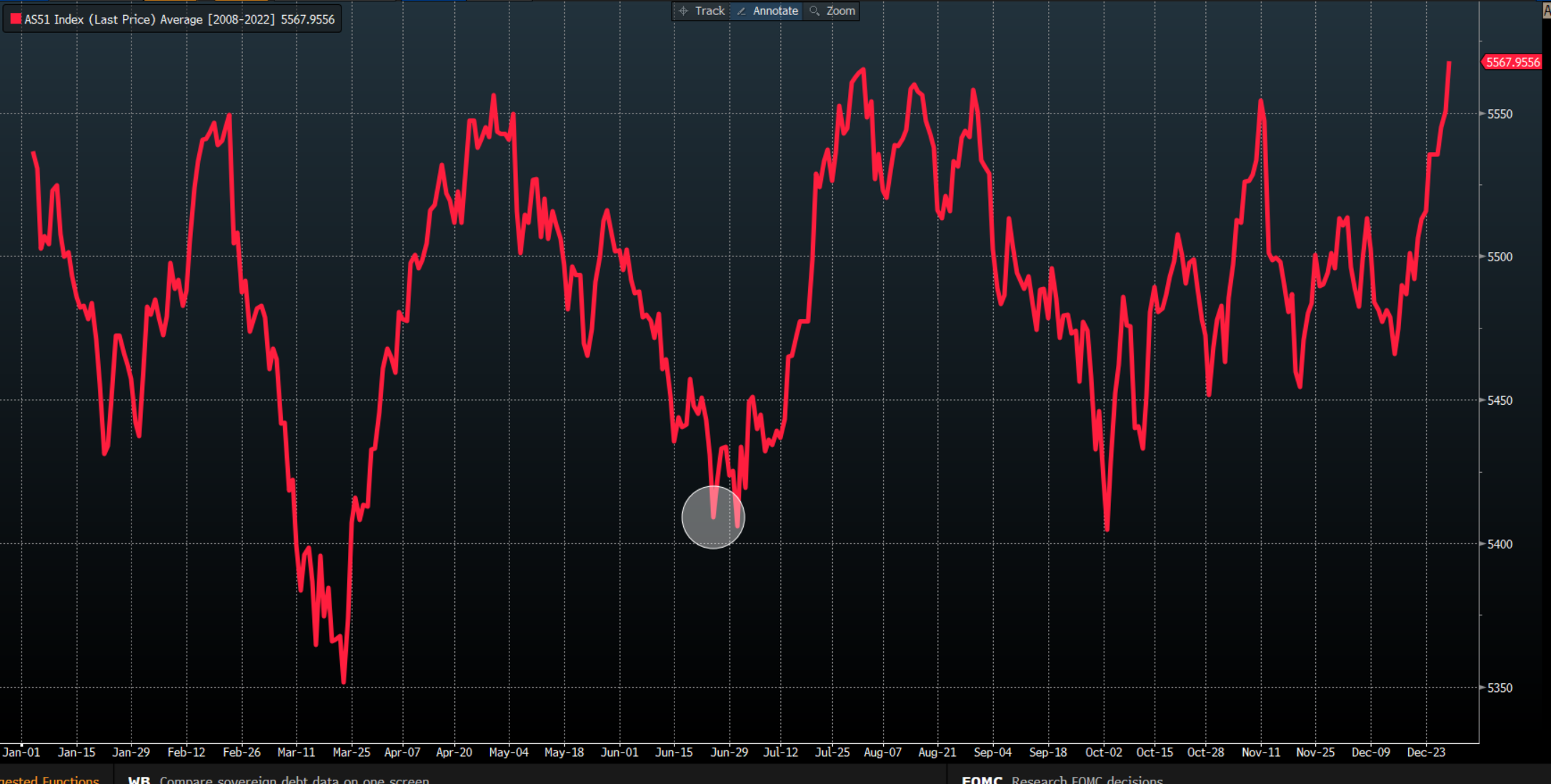- English
• Will we see inflation take a further leg lower, as expected?
• Could July mark the month after which the Fed go on an extended pause?
• Will the BoJ/MoF act and intervene to curb the JPY weakness?
• Will China roll out the impressive stimulus that is widely expected post the July Politburo?
• Will the US Q2 earnings season (starting 12 July) prove to be a volatility event?
Yet amid these macro considerations is the incredibly strong and consistent seasonal performance, notably of the US and Aussie equity markets in July. If we look at the performance and the form guide of broad markets over the past 15 years, we see in the NAS100, US500 and AUS200 dramatically stand out.
In the past 15 years, the NAS100 has rallied in July in every single occurrence, with an average gain of 4.6% - granted, this has been skewed by the impressive 12.6% rally we saw in July 2022, but even if we remove that print, the average gain is still impressive at 3.8%.

The AUS200 has rallied in 12 of the last 15 months of July, with the declines seen in 2017 (-0.02%), 2011 (-4%), and 2008 (-4.6%). The average monthly gain in July is 2.6%, making it the best month historically of the year.
In Australia, we know that July marks the start of the new financial year, but it also is the lead-in for ASX200 full-year earnings, so one could argue funds are deploying capital ahead of results.
Looking at the performance in the AUS200 another way, if we blend the daily data points from the past 15 years, we can see the ASX200 is coming into a seasonally sweet spot (I’ve marked where we are today). Could history repeat itself once again?

Is this time different?
The past performance disclaimer applies here, and while history often rhymes, we should naturally consider how this time is different from the past 15 years. In 2023, and unlikely recent times:
- The Fed (and global central banks) ‘put’ is highly questionable, with global central banks myopically targeting high inflation.
- We see the highest fed funds rate since 2007, and it seems likely the Fed hike again at the 26 July FOMC meeting.
- The Fed is reducing its balance sheet (QT) by $95 p/m, while the US labour market is close to the tightest it’s been since the late 1960s.
- We also know the market structure has changed, with passive flows so much more dominant and the rise and rise of 0 DTE (Days to Expiry) options driving equity momentum.
Clearly, things are different in 2023 than in the post-GFC QE/zero interest rate world – however, with such consistency in the gains, and a reasonable sample size, one could argue there is something in the buying that suggests that skews the distribution of risk.
For traders, using seasonals as a signal may not be the best a great strategy, especially if used in isolation, but it can be a clear input. However, when you see such consistency in the performance and with NAS100 and US500 already exuding such bullish momentum, it makes me question if this July could also see the bulls in control once again. One thing seems clear, it promises to be a lively month in the equity market.
Related articles
The material provided here has not been prepared in accordance with legal requirements designed to promote the independence of investment research and as such is considered to be a marketing communication. Whilst it is not subject to any prohibition on dealing ahead of the dissemination of investment research we will not seek to take any advantage before providing it to our clients.
Pepperstone doesn’t represent that the material provided here is accurate, current or complete, and therefore shouldn’t be relied upon as such. The information, whether from a third party or not, isn’t to be considered as a recommendation; or an offer to buy or sell; or the solicitation of an offer to buy or sell any security, financial product or instrument; or to participate in any particular trading strategy. It does not take into account readers’ financial situation or investment objectives. We advise any readers of this content to seek their own advice. Without the approval of Pepperstone, reproduction or redistribution of this information isn’t permitted.


.jpg?height=420?quality=30)

